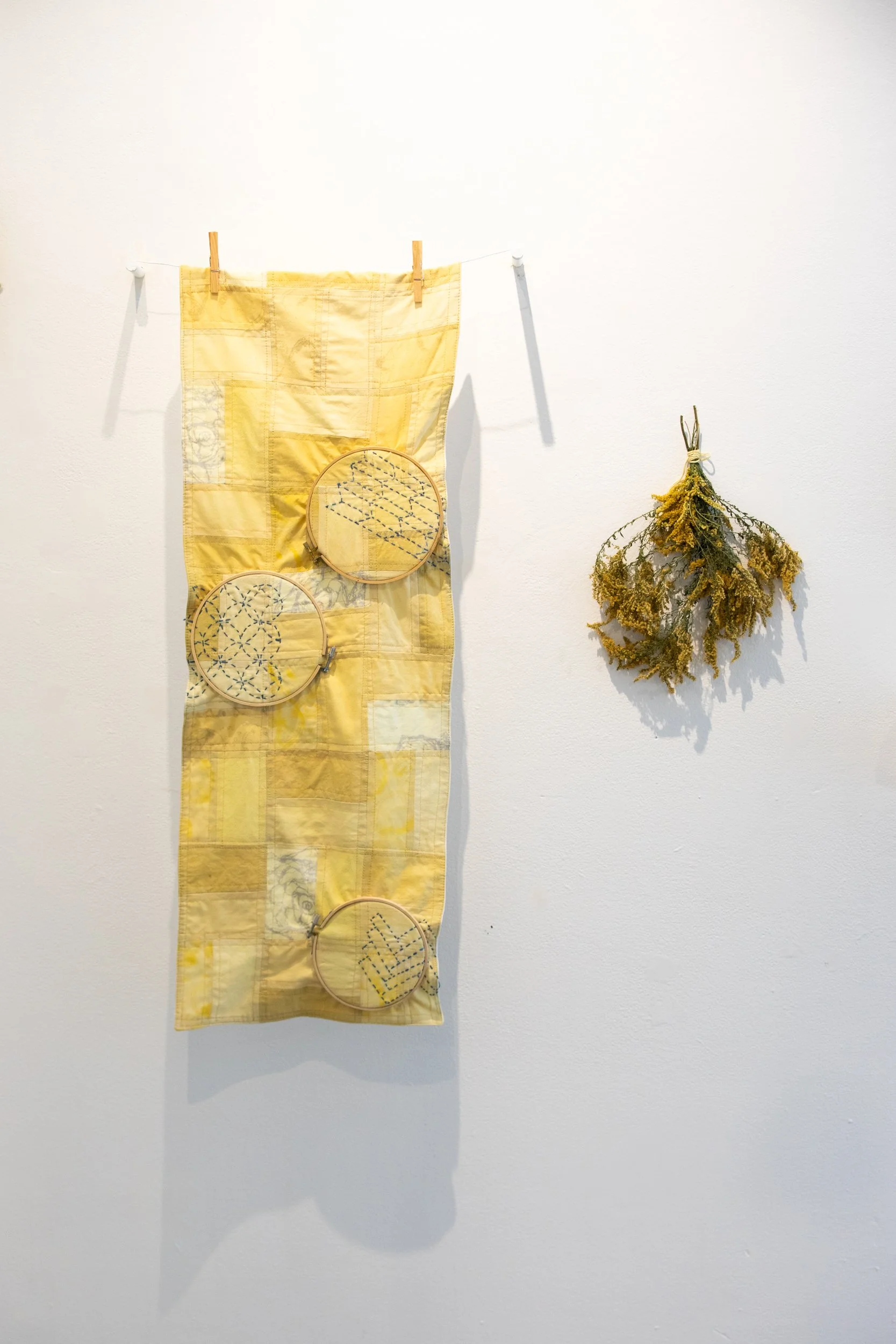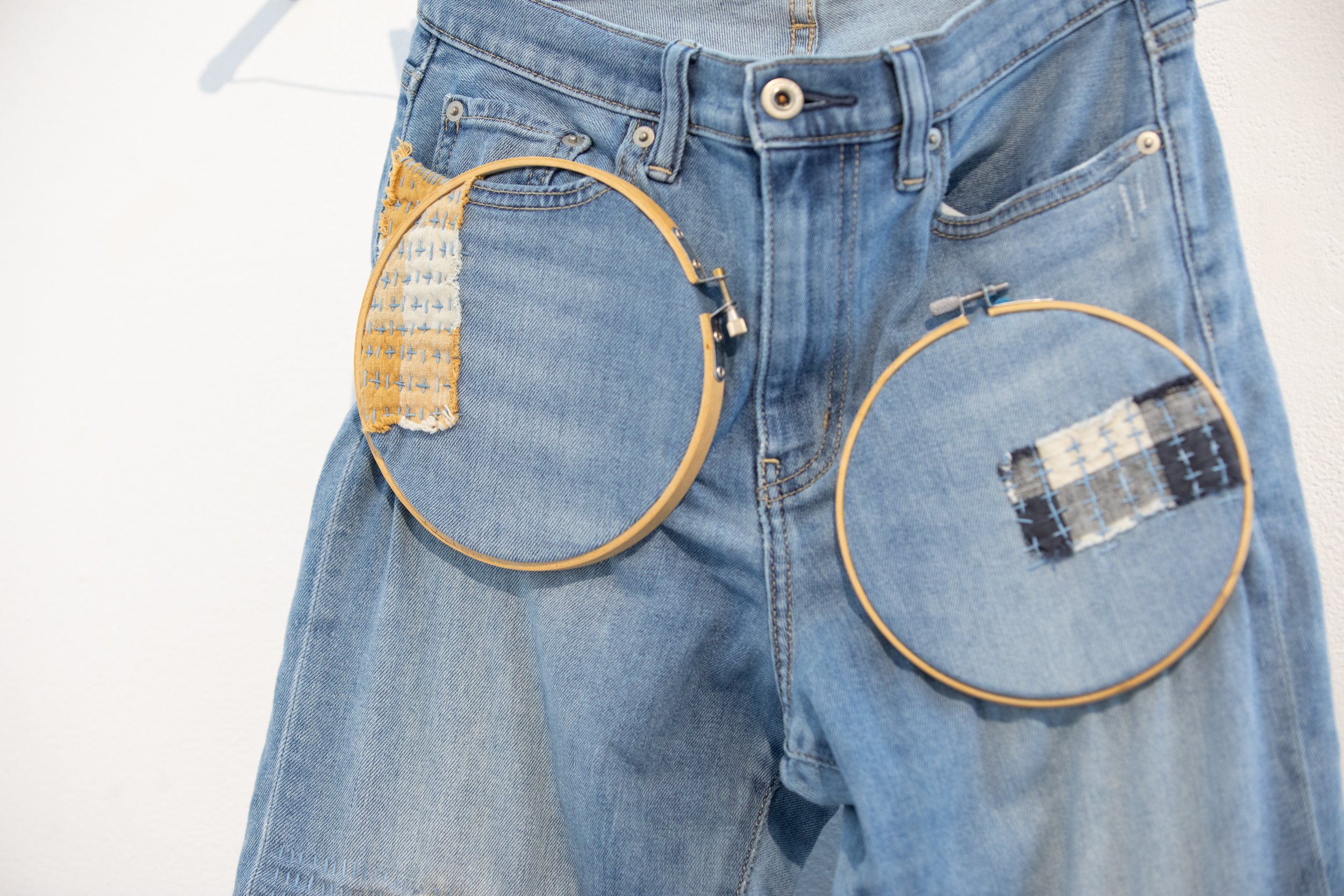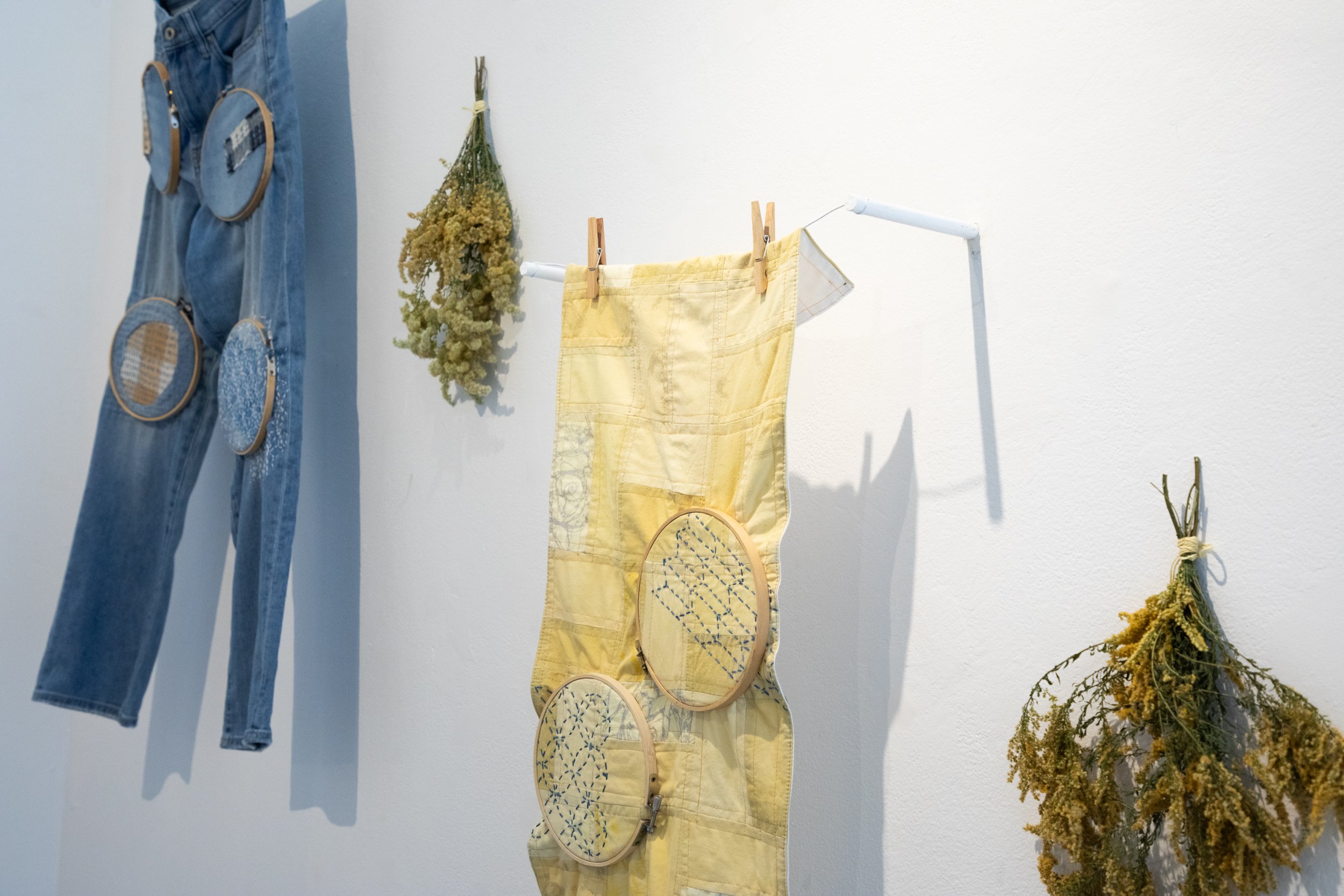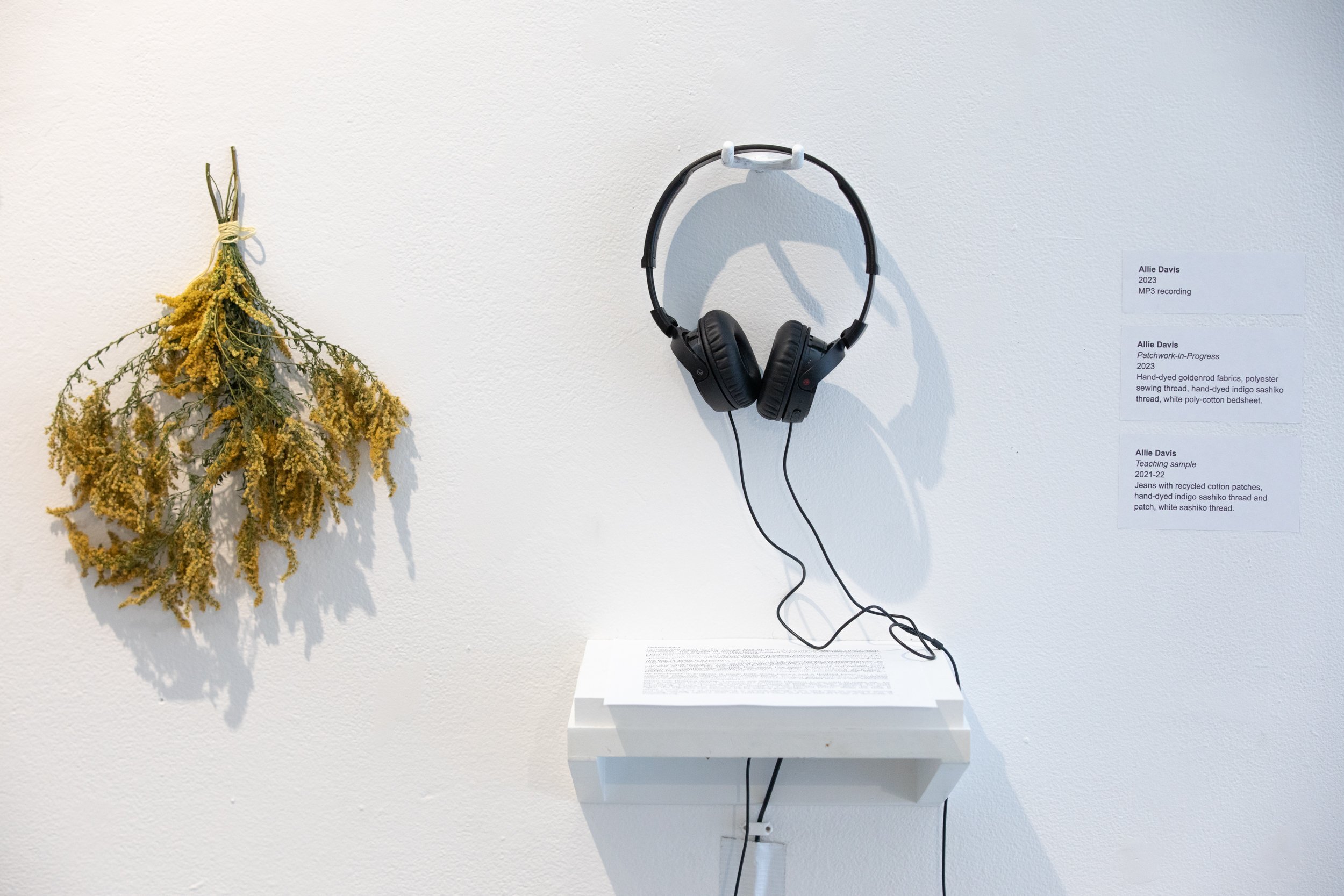Group exhibition featuring the work of Holly Chang, Leah Defoort, Allie Davis, and Callie Legault.
September 15 – November 11, 2023
From local plants to pigments; dye-samples to patchwork garments; and recycled yarn to wearable installations, ‘Mending the Craft: Sustainability in Contemporary Textiles’ considers the role of ecology in the life cycle of textiles. With an explicit emphasis on materials, the works of Holly Chang, Leah Defoort, Allie Davis, and Callie Legault respond to— and contend with— expanded processes of contemporary textile art production. The artists in the exhibition imagine a new era of ecologically conscious practices— one stitch at a time.
They ask and begin to answer the following questions: How can textile practitioners respond to the ecological cost of art production? More importantly, how do these practices act as models of sustainability in the arts and beyond?
Curatorial essay by Cecily Ou.
Artist Statement:
“I create and mend textiles for the love of making, but also to educate others about the waste created during textile production, particularly in fast-fashion and fast-homewear. The amount of textiles being created is far more than we could ever use, and unsustainable given our climate crisis.
I first learned about mending from books and videos, primarily Atsushi Futatsuya, Lily Fulop, Katrina Rodabaugh, Christi Johnson, Flora Collingwood-Norris, and Celia Pym. I am most inspired by the Japanese philosophies associated with repairing clothing and upholstery.
The pair of jeans is a teaching sample that I bring to workshops and presentations, so that folks can see and touch the insides of the patches. The long running-stitches are called “sashiko”, a Japanese mending style where the thread decorates the fabric as well as strengthening it. The jeans are fast-fashion; Although I try to purchase more ethically when possible, everything I buy will be worn repeatedly and mended until the end of its life. For the past few years I’ve been purchasing only secondhand fabric, and compostable clothing whenever possible. I see clothing as a luxury resource, something we should treat with care. It is also a political expression - visible mending shows others that you don’t frequently discard clothing, and it’s precious to you.
My patchwork-in-progress is made from scrap fabrics and a thrifted bedsheet. I love the idea that the fabric carries memories of my previous intentions. I mordanted them for longevity and dyed them with locally foraged goldenrod, from an alleyway near my apartment. Goldenrod is often mistaken for ragweed but it’s not allergenic and is a great plant for pollinators.
When I’ve finished dyeing, I rescue any leftover pigment in the bath to make ink. To turn a dye into pigment, I add separate solutions of potassium alum sulphate and soda ash to create a chemical reaction. It takes a long time for pigment to start separating, before I can strain it through coffee filters. The fun part, for me, is grinding that pigment into a fine powder in a mortar and pestle. When the time is right, the pigment can become ink by adding gum arabic.
While I have a lot of experience in natural dyeing, I am very new to machine-sewing and ink-making. I don’t think of it as artwork, but as a daily practice and a way of thinking; having agency over the clothing I wear and the fabrics I use to decorate is empowering.”
Documentation by Polina Teif










